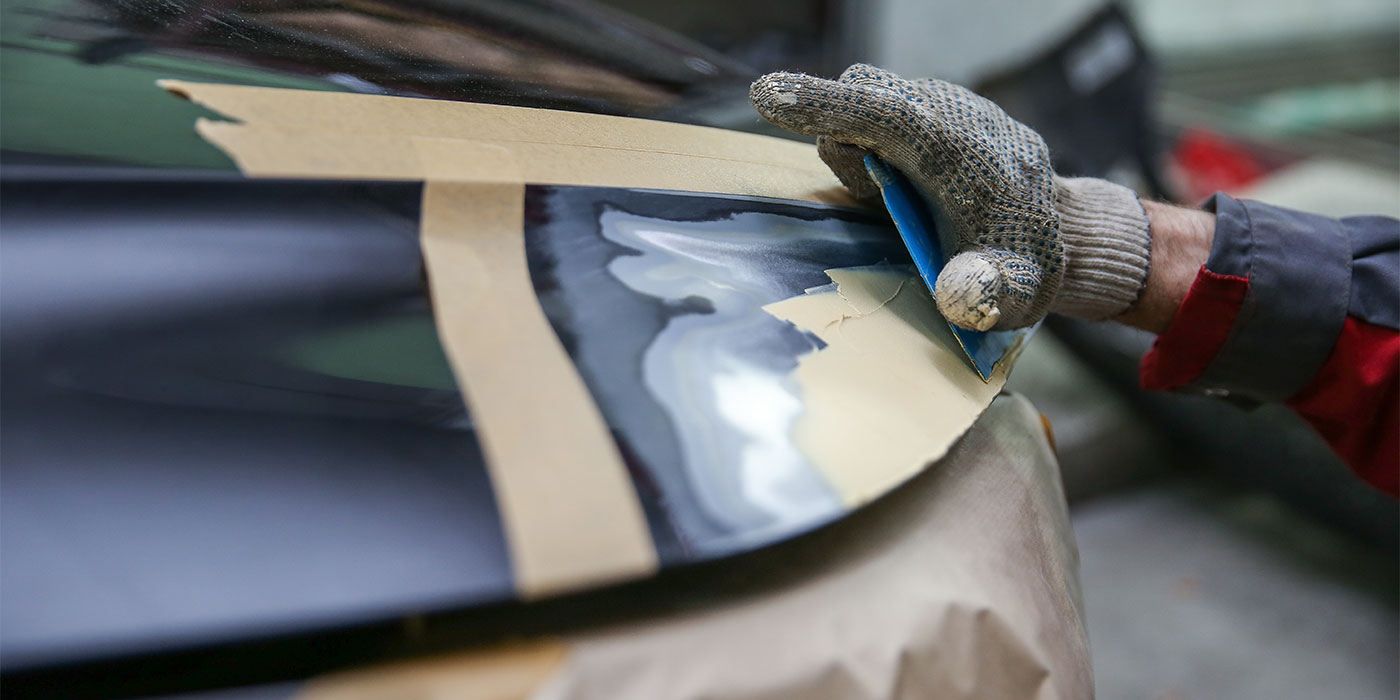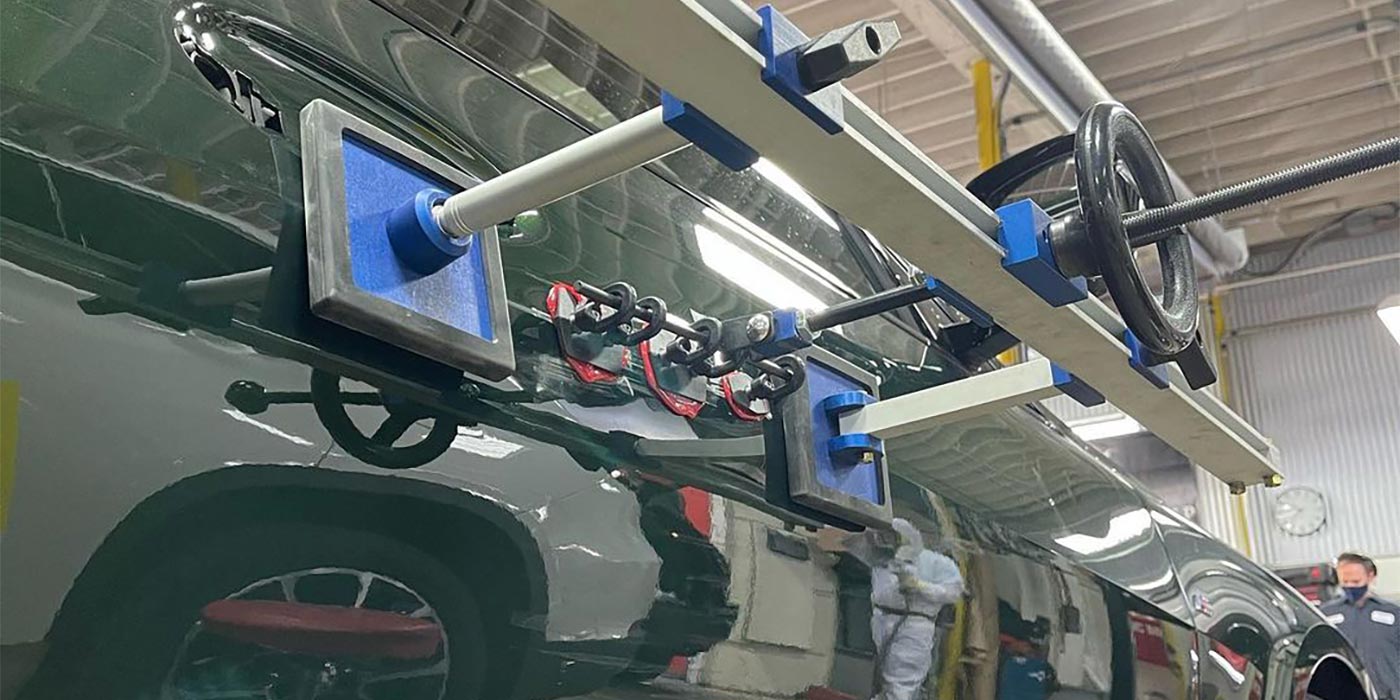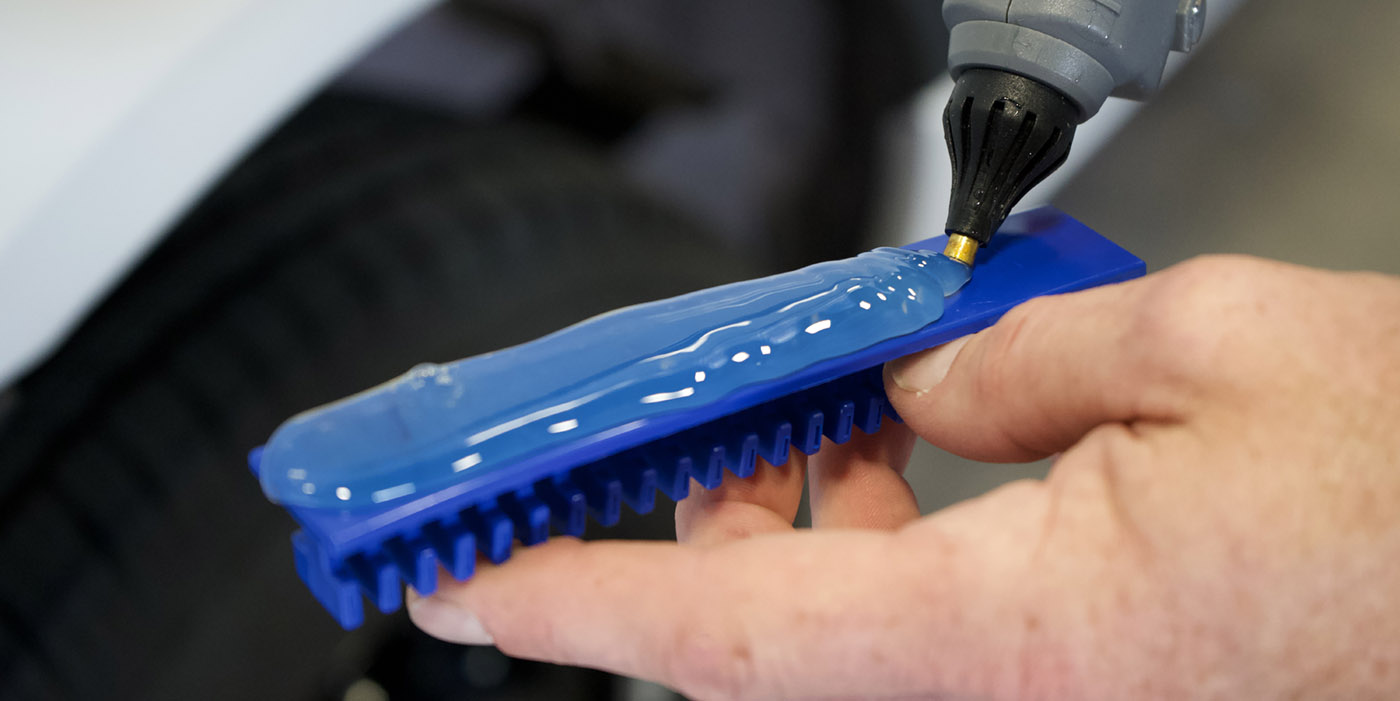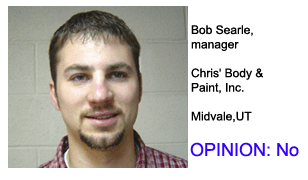
Bob Searle, manager
Chris’ Body & Paint, Inc.
Midvale, Utah
OPINION: No
I think most shops are equipped to do a clip, but in my opinion, there’s never a good time to do one because it’s never cost effective in the long run. It is for the insurance company, but not for the shop.
It’s also not usually cost effective for the customer. If the car’s damaged enough that you’re to the point of doing a rear section, it should be totaled anyway.
Clipping isn’t an acceptable procedure because insurers are never willing to pay to do it properly. What they figure is that you’re going to use a used quarter panel on a vehicle. But when the used quarter comes in from the junkyard, there’s the outer piece of the panel, the inner piece and all the inner structure. So you have to pick it all apart (which means picking apart the welds), cut the damaged quarter panel off and then weld it back on.
It’s usually time-and-a-half to use a used part, but nobody’s ever willing to pay for that. They want it for the same amount it would take for a brand-new quarter panel. Yet when you buy a brand-new quarter panel, all you’ve got to do is cut off the old quarter panel, line it up, seam it where it needs to be and weld it on.
Our shop has done the procedure, but we don’t do clips now unless the insurance company really wants us to — but then we try to make them pay at least time-and-a-half to do it. The last time we did one, we didn’t have any problems. But I don’t think we made what we really should have on the job.
I agree that a clip sometimes can save a car from being totaled because the insurance company never figures what it takes to pay for one. To really do one properly, you’re going to be over the total amount anyway.
[Some repairers say that by reducing the number of parts installed individually, a rear body section] takes less time, and that helps improve shop cycle time. I disagree because you have to pick apart and get things ready to cut, so you’re probably worse off time-wise.
It shouldn’t have any impact on customer safety if it’s done properly, but any big hit like that will have an impact on the car’s value. It’s not the repair that will hurt the value; it’s the fact that the damage was done in the first place.
Clipping also places physical limitations on the facility because even if it’s only half of a car, it’s going to take up a whole bay since you’re going to be tearing it apart. Plus — and this is what the insurance companies don’t realize — you have to tear apart two separate cars and make one out of two.
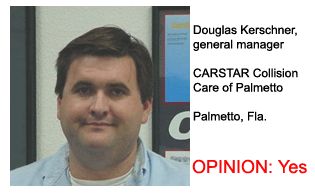
Douglas Kerschner, general manager
CARSTAR Collision Care of Palmetto
Palmetto, Fla.
OPINION: Yes
When I worked for a dealership, we did some clips. So I’ve done the procedure quite a bit.
If you don’t go to the factory joints, it can rust out. But if you go to the factory joints and seal that area up really well, the whole rear end of the car is still sealed.
I’m sure on the newer cars, there are disadvantages to doing a clip, but the ones I’ve done them on were almost always total losses and either the vehicle owner or the insurance company was trying to save them.
I agree that a lot of times when a clip is done, the car probably is a total. But sometimes it’s just a better fix because of the fact that all the inner panels and brackets are welded at the factory joints.
Some repairers shouldn’t do clips. They
shouldn’t be touching the car if they can’t properly do them. At the dealership, I had everything — the laser measuring system and the lift. I’d disassemble the car and do it right, put it up on the lift, do the welds really nice underneath and wax coat the rails. But some of these places don’t even have measuring systems, and they just fix them on the floor. It’s a combination of having the technical skills and the equipment.
I had it down to where I could have one done in less than a week. It took about five days, sometimes less, and then it would be in the paint department. And with a clip, you can keep a vehicle outside until the last minute and then do it. I’d say it takes up two bays for maybe three days at
the most.
It’s still worth my time because the insurance company is going to fix it one way or another. You can look at it this way: They’re going to give you a used clip anyway, and they’re going to make you trim everything out just to put it on and put a new trunk floor in. If they’re going to go that far, you might as well just put the whole darn thing in.
I’ve even seen where certain insurance companies will bring you a whole clip and just tell you, “I’ll let you cut out the rails and put them in this car. Just the rails. Leave the trunk floor alone.” One time on a Camaro, I watched the guy next to me go through hell. The insurance company paid nothing, and he went nuts trying to get this rail out of the car. If you’re going to do it, you might as well do the whole thing and make sure it’s done right.
As long as it’s done correctly, I don’t see why it would affect safety. I wouldn’t be afraid to get in any of the vehicles I’ve done. I look at every vehicle like my children are in that vehicle, so I take extra time — but there’s a lot of people who won’t. There are a lot of butchers out there and a lot of unqualified people who shouldn’t be touching cars, period. I’ve seen a lot of scary people.
But there are also guys who are conscientious and do things correctly. And when those guys do a clip, I would say it’s a safe procedure.
If you use factory parts, I don’t see why it should affect the car’s value. It all depends on the quality of the job. If it’s been butchered, yes, it affects the value. Any repair job not done right would do that. It’s all about the technician.
Comments? Fax them to (330-670-0874) or e-mail them to BSB editor Jason Stahl at [email protected].






